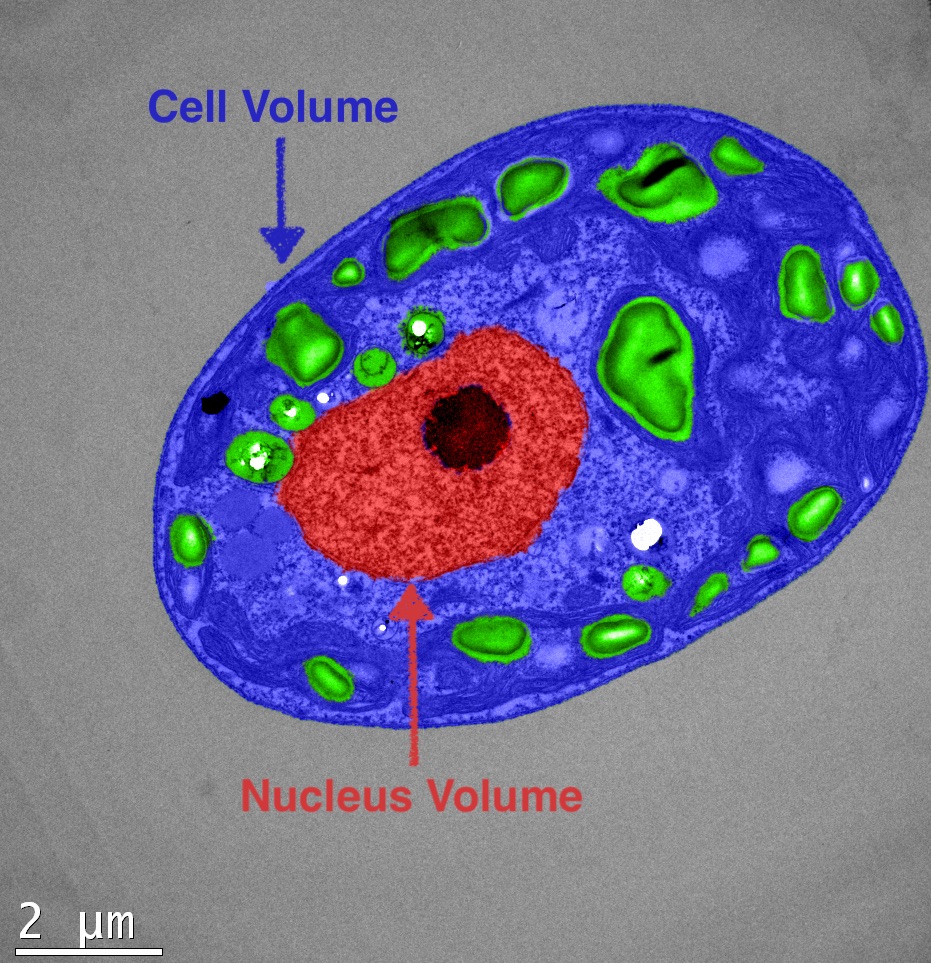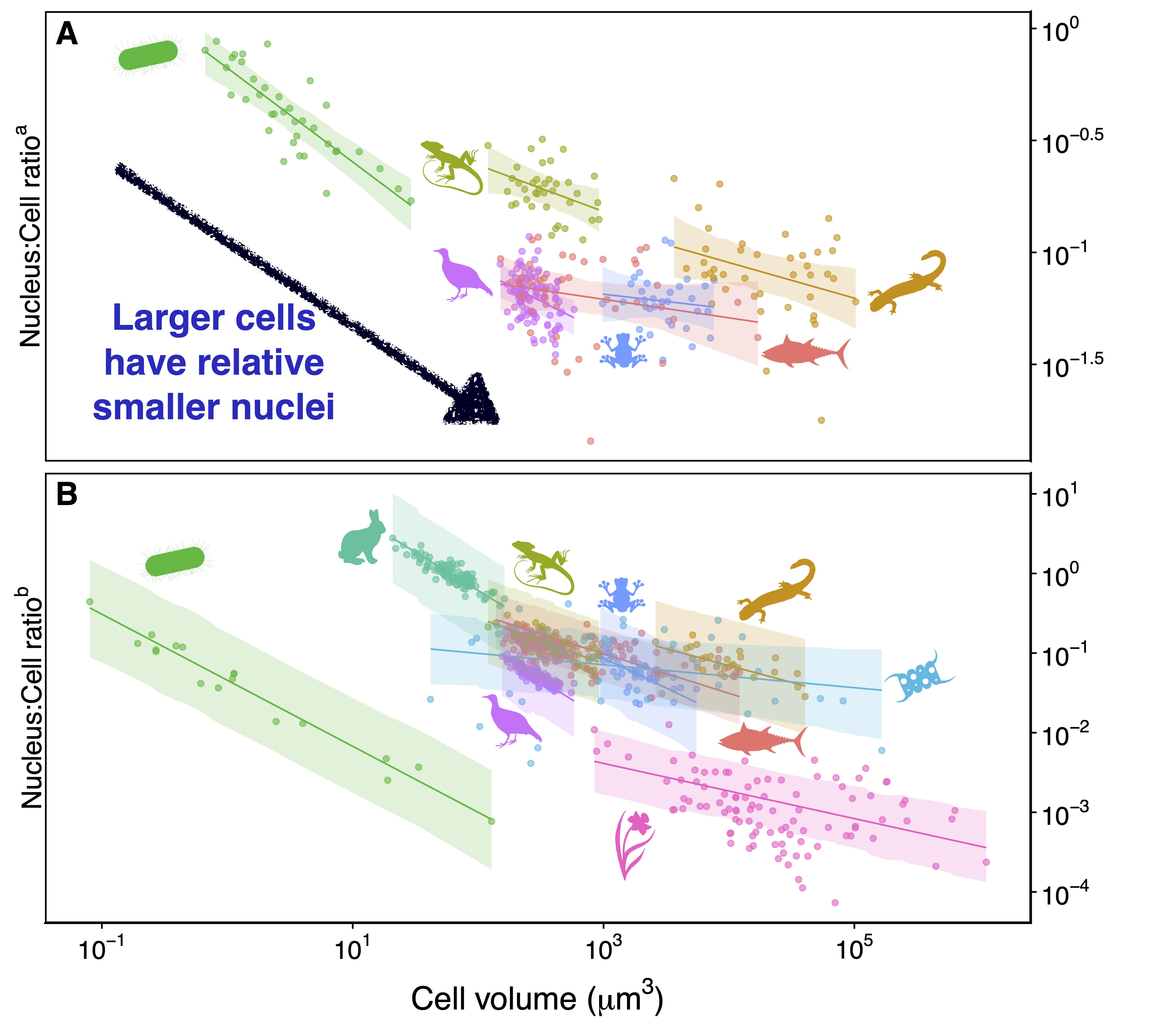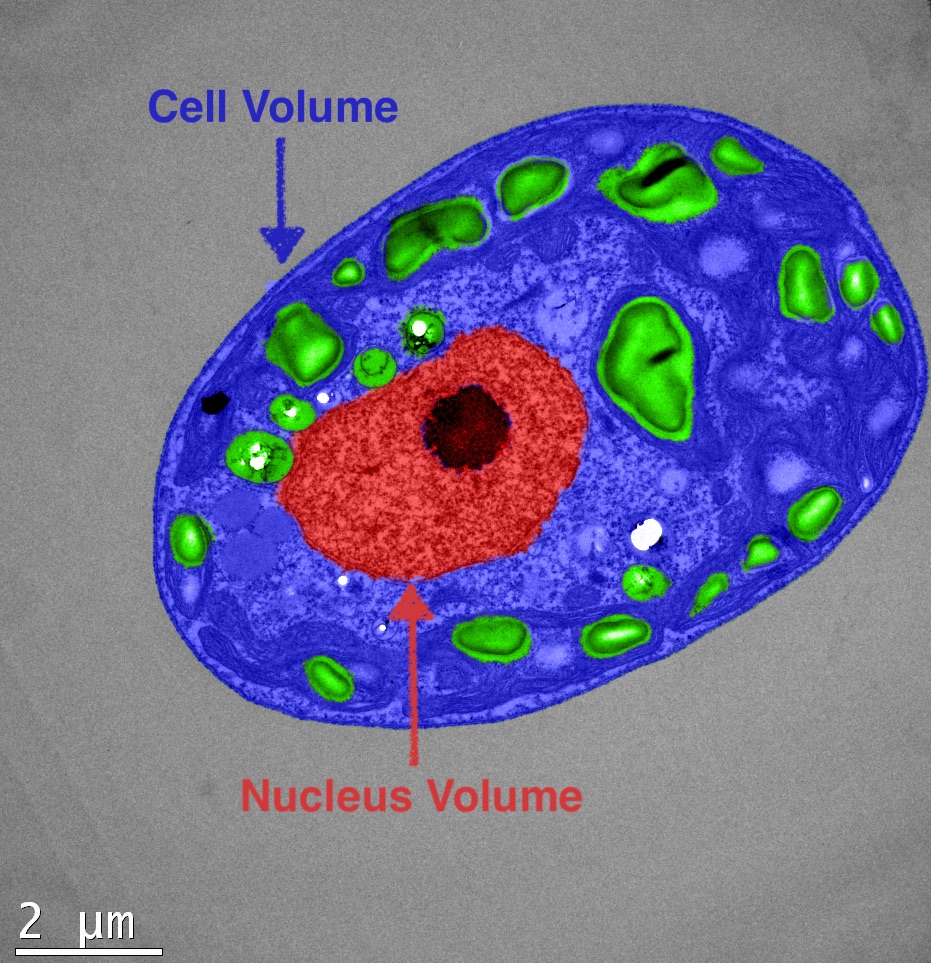A new study published in Evolution Letters finally puts paid to a long-held belief that the ratio between nucleus size and cell size is approximately constant.
Although recently it has been recognised that nucleus size and cell size are not inexorably bound, the idea of a constant nucleus to cell size (NS:CS) ratio – the karyoplasmic ratio – remains pervasive in biology. Not least in cancer biology where the karyoplasmic ratio is used in both diagnosis and prognosis for certain tumour types.
However, in their new study, Dr Martino Malerba and Prof Dustin Marshall found that bigger cells have relatively smaller nuclei; as cells get bigger, the karyoplasmic ratio actually gets smaller.

Transmission electron microscopy image of a cell, showing the nucleus. Image: Malerba & Marshall.
It all started when Martino and Dustin noticed that their evolved lines of different size algae didn’t show a constant karyoplasmic ratio. This piqued their curiosity; were these cells unusual or had this been observed in other cells? They started compiling data on cell size and nucleus size in a range of species and started reviewing publications for statements about the karyoplasmic ratio. To their surprise, they found many publications referring to a constant ratio between nucleus size and cell size, but the data didn’t support that. It was enough to compel Martino and Dustin to formally assess the karyoplasmic ratio across a wide range of cell types and species.
They continued amassing data on cell size and nucleus size across as many species as they could find. They collected measurements from 879 species, ranging from microbes to mammals. Then they looked for data within a species and assembled 7929 observations of both nucleus size and cell size in a diverse range of species including yeast, plants and metazoans. Finally, they returned to the artificially size-selected algae (small and large) and tracked nucleus size and cell size across 500 generations of evolution.
What they found was that while, yes, bigger cells had bigger nuclei, in relative terms bigger cells had smaller nuclei. At all three scales of biological organisation that they looked at (among-species, within-species, and among evolved lineages of the same species) they saw a systematic decrease in the karyoplasmic ratio with increasing cell size.

From microbes to mammals, larger cells have relatively smaller nuclei. Figure by Malerba & Marshall.
Why do larger cells have relatively smaller nuclei? The authors surmise it might tie into the fact that larger cells also have relatively lower metabolisms. So, is it because larger cells, with their lower relative metabolic rates are able to meet all of their functional needs with relatively smaller nuclei? Or, conversely, is it because larger cells, with relatively smaller nuclei are only capable of sustaining relatively lower metabolic rates? We don’t know.
What we do know is that the decreasing karyoplasmic ratio with increasing cell size is remarkably consistent across a wide variety of life forms. Martino and Dustin hope that a universal driver for this relationship will be identified.
Dr Martino E. Malerba is a postdoctoral Fellow now working at Deakin University (Melbourne, AUS) for the Centre for Integrative Ecology. Prof. Dustin J. Marshall is the director of the Centre for Geometric Biology at Monash University (Melbourne, AUS). The original article is freely available to read and download from Evolution Letter. For more information on Malerba and Marshall’s research, and on other studies using size-selected phytoplankton cells, visit the Centre for Geometric Biology website (https://cgb.org.au/).


